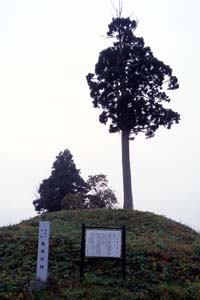The Kofun period lasts from the 4th century to the end of the 7th century. It is generally the same development in Iwate Prefecture, but the early stage is strongly influenced by the north.
When the Tohoku region was transformed from the late Jomon period to the Yayoi period, Hokkaido, which ran through the Tsugaru Strait, continued the hunting and collecting society called the “Jo Jomon period,” which inherited the culture of the Jomon period. This culture, which developed independently, is eventually established as "Kohokushiki" pottery culture in the late Jomon period (end of the 3rd century-4th century). It was transmitted to Honshu, and the cultural area eventually expanded to near Miyagi, Fukushima, and Niigata. Many ruins are concentrated in the northern part of the prefecture north of Morioka city in Iwate Prefecture.
The most ancient burial mound in the prefecture is the Isawa district. From the Takayama ruins (Oshu city) in the 4th century, pits, pots, pots and pots, pots and pots of about 5 meters on a side were excavated with a whetstone. In the latter half of the 5th century, a Tsukazuka burial mound was built in the middle of the Gurizawa plain, in the current Oshu city Gichizawa-ku Minamitsuta (Natsuta). The Kakuzuka burial mound is the foremost round burial mound in Japan with haniwa (full length), total length 45 meters, back circle diameter 28.3 meters, forward length 16.1 to 17.3 meters, same width 15 to 16 meters , The maximum height of the back circle is 4.3 meters, the maximum height of the front is 1.5 meters. The front part is short and low, and it is a form close to what is called "Scallop-style tomb". It seems that the old tomb was made up of a cylindrical shape, a morning glory type, and a figurine shape, and there are three types of figured creations: female person, animal (wild boar, waterfowl, horse) and equipment (house). It is thought that the burial mounds of Miyagi Prefecture are based on the genealogy of burial mounds and genealogy of Minowa, and the beneficiaries of the Kakuzuka burial mound are linked to one end of the national political order through the helm of Miyagi prefecture. It is thought that
The beginning of Kuni of Biwazawa
Updated Date: 2019-03-16

